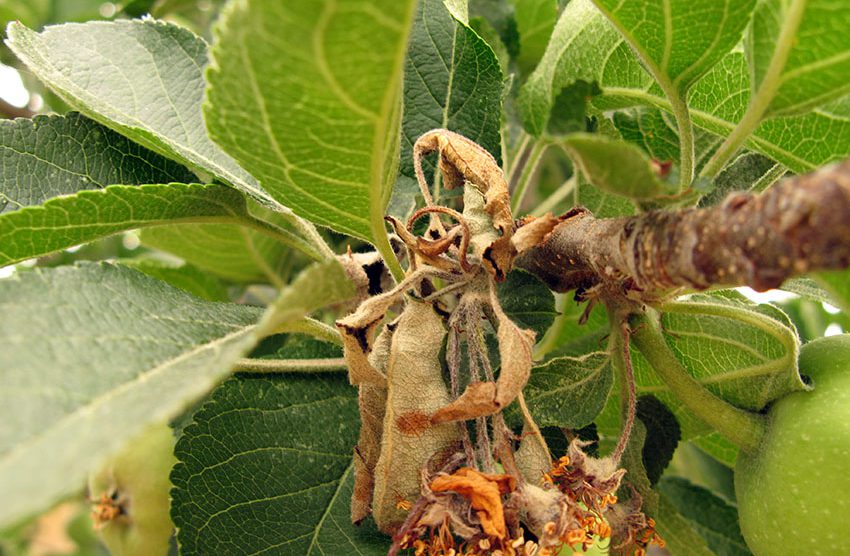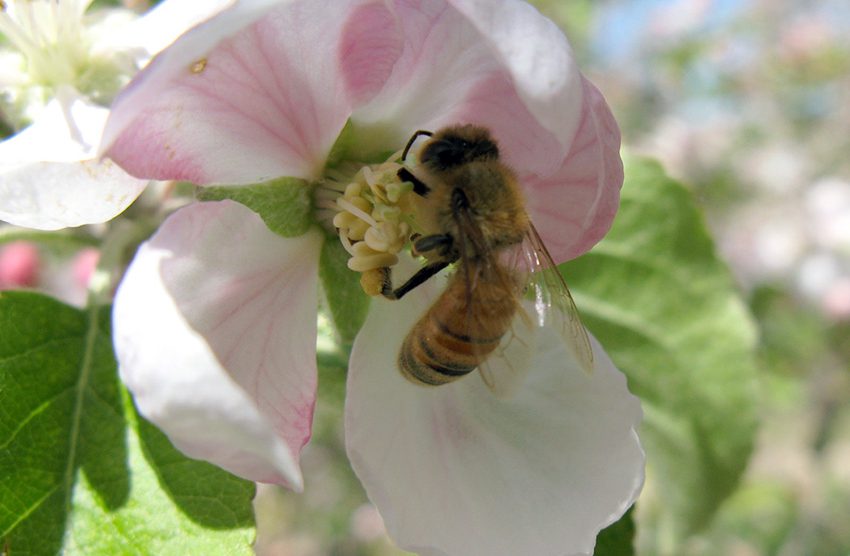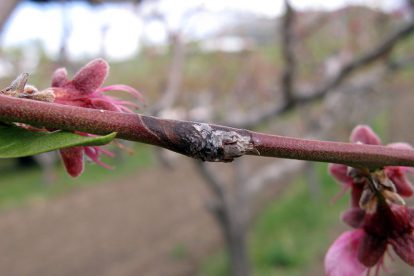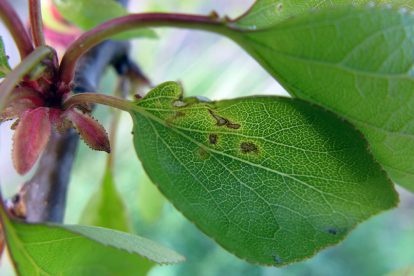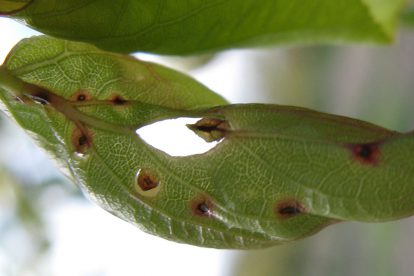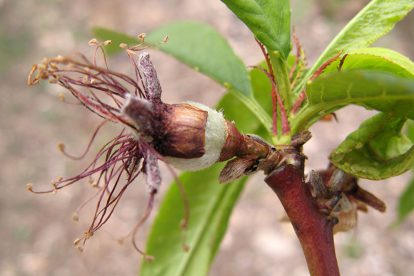What to Watch For
- Codling moth: no spray dates available yet for northern Utah
- Fire blight: high risk for infection of open flowers through May 4
- Coryneum blight: apply fungicide at shuck split stage
- Aphids on apple, peach and cherry (green apple aphid, green peach aphid, black cherry aphid, etc.) are building in numbers now. If leaves are severely curled, commercial growers should use Admire Pro (or generic) and backyard growers can use Spectracide Triazicide, GardenTech Sevin, or for organic options, neem oil or insecticidal soap
Apple, Pear
Codling Moth
To determine the codling moth treatment timing, we hang pheromone traps in orchards. Once we catch moths, we can run the calculations and provide dates. As of now, we are gathering information for codling moth spraying times from some northern Utah locations. With the current and upcoming warm weather, we expect to have this information out in a new post in the next few days.
Fire Blight
infections may happen on blossoms in warm, wet weather
Fire blight is a bacterial plant disease that causes infections through open flowers on apple and pear (plus other ornamentals such as crabapple, ornamental pear, and hawthorn). Infections occur during warm, wet days. We use a model to predict fire blight risk.
Based on the model, there is a very high potential for infection on open blossoms this week. Fire blight is a disease that needs moisture to cause infection. Even though no rain is predicted for this week, the higher upcoming temperatures increase the chance for infection even from dew moisture. Therefore, it is better to be safe and protect the blossoms of young trees and trees that had fire blight last year.
The infection risk (only applies to open blossoms) is shown for counties below for April 29 – May 4:
- Cache, Iron, Uintah: EXTREME Risk – if open flowers, apply treatment around April 30
- Box Elder, Carbon, Utah, Weber: EXCEPTIONAL Risk: apply treatment to open blossoms April 28 or 29
- Eureka, Davis: EXCEPTIONAL Risk – apply to open blossoms April 28
You can watch fire blight predictions on the Utah TRAPs website by selecting a location closest to you, and then selecting Fire Blight in the ‘Pest’ drop-down.
Streptomycin is the most commonly used antibiotic for fire blight. It provides protection for approximately three to four days. Looking at the weather forecast, the temperatures appear to cool down by Tuesday, May 5. Therefore, if an application is made on April 28 or 29, a second application may be needed on the most sensitive trees.
Treatment
For commercial producers, most areas (except the southern part of Utah County, which has resistance) can use streptomycin. Where resistance occurs, producers should use oxytetracycline (MycoShield) or Kasumin. One application can be a mix of oxytetracycline and streptomycin.
Most backyard growers should not need to apply an antibiotic. Instead, monitor trees closely starting two weeks after full bloom (which is when infections start to become visible). A future post will discuss pruning out new infections, which should be done on a dry day. If a spray is necessary, most garden centers carry streptomycin. It is important not to over-use this product, or the bacteria will develop resistance.
Peach/Nectarine, Apricot
Coryneum blight
apply fungicide at shuck-split stage
Coryneum blight is a disease that affects foliage, fruit, and twigs of peach/nectarine and apricot. Foliar injury does not affect the health of the tree, but is a great way to monitor for the activity of this disease. It appears on foliage as purplish-tan spots that drop out after a few days, leaving a round hole in the leaf.
On fruits, it causes purplish lesions. When the lesions age, they turn scabby and darker in color. This disease is dependent on rain and temperature. The upcoming temperature is conducive to infection; however, where there is no rain predicted, the infection risk is very low.
However, where this disease has been a problem in the past, the first fungicide application would be at the shuck split stage (see image).
Treatment
Commercial growers can find options by clicking here.
For Backyard growers, do not let any irrigation water land on foliage/fruit. If necessary, use one of the following:
- chlorothalonil (Monterey Fung-onil, Ortho Max Disease Control, others)
- NOTE: do not use chlorothalonil on peach/nectarine, or apricot between post-shuck-split stage and harvest.
- Captan
- myclobutanil (Spectracide Immunox, Monterey Fungi-Max)

